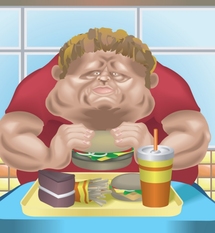
"There is not a statistically significant increase or decrease for either boys or girls two to 19 years of age," he told a panel of the House Agriculture Committee.
Nevertheless, Dietz warned "we cannot become complacent about this plateau," citing a long list of maladies associated with obesity, including adult-onset diabetes and cardiovascular disease.
Between 1976 and 1980 about five percent of American youth were classified as obese, Dietz told lawmakers. But by 2006 the percentage had more than tripled, to 16.3 percent.
While the news was encouraging about the slowing rate of youth obesity, Dietz testified that childhood obesity remains "an epidemic in the United States -- one that is negatively impacting the physical and emotional health of our children, their families, and society as a whole."
------------------------------------------------------------------
Nevertheless, Dietz warned "we cannot become complacent about this plateau," citing a long list of maladies associated with obesity, including adult-onset diabetes and cardiovascular disease.
Between 1976 and 1980 about five percent of American youth were classified as obese, Dietz told lawmakers. But by 2006 the percentage had more than tripled, to 16.3 percent.
While the news was encouraging about the slowing rate of youth obesity, Dietz testified that childhood obesity remains "an epidemic in the United States -- one that is negatively impacting the physical and emotional health of our children, their families, and society as a whole."
------------------------------------------------------------------









 Home
Home Politics
Politics









